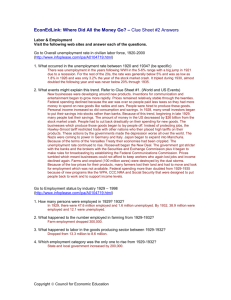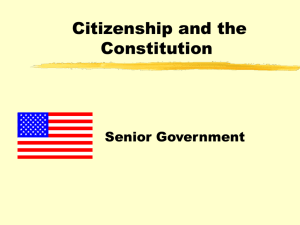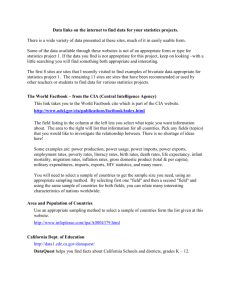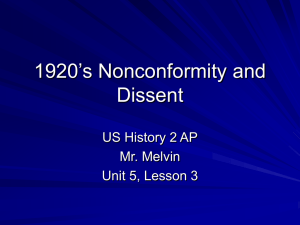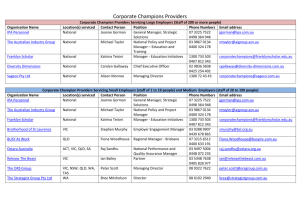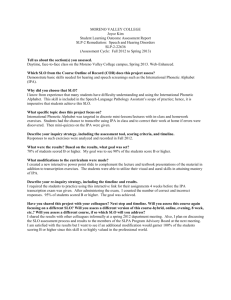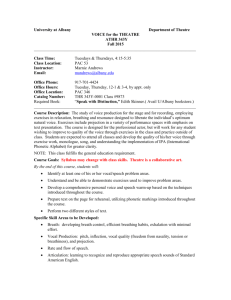APUSH Great Depression Questions
advertisement
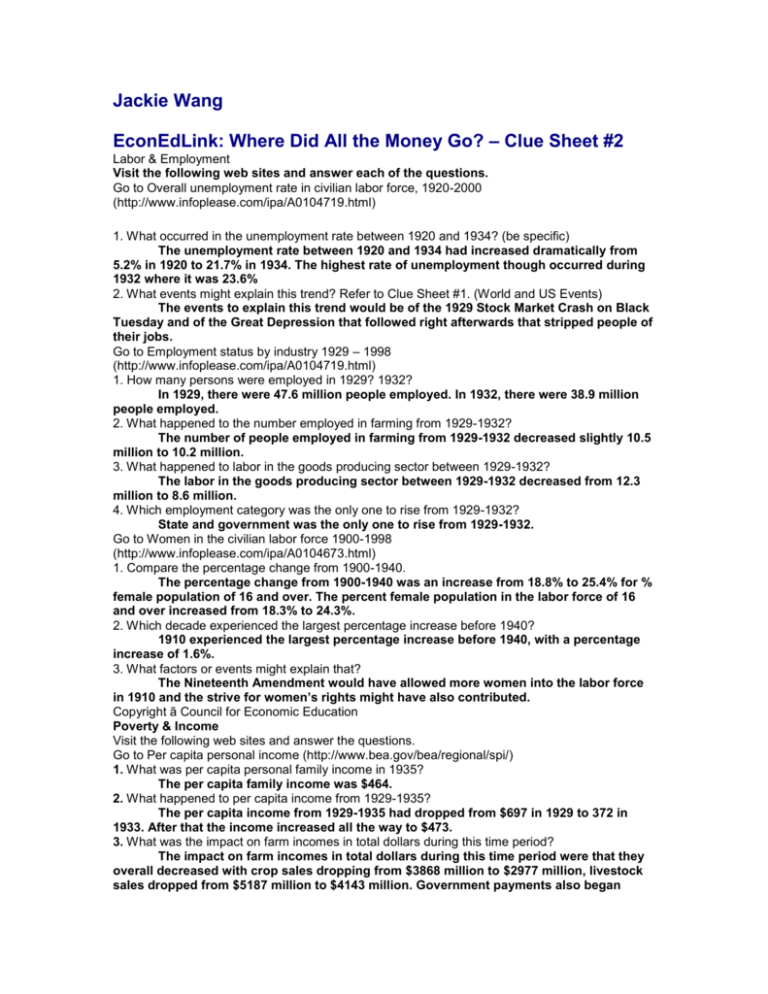
Jackie Wang EconEdLink: Where Did All the Money Go? – Clue Sheet #2 Labor & Employment Visit the following web sites and answer each of the questions. Go to Overall unemployment rate in civilian labor force, 1920-2000 (http://www.infoplease.com/ipa/A0104719.html) 1. What occurred in the unemployment rate between 1920 and 1934? (be specific) The unemployment rate between 1920 and 1934 had increased dramatically from 5.2% in 1920 to 21.7% in 1934. The highest rate of unemployment though occurred during 1932 where it was 23.6% 2. What events might explain this trend? Refer to Clue Sheet #1. (World and US Events) The events to explain this trend would be of the 1929 Stock Market Crash on Black Tuesday and of the Great Depression that followed right afterwards that stripped people of their jobs. Go to Employment status by industry 1929 – 1998 (http://www.infoplease.com/ipa/A0104719.html) 1. How many persons were employed in 1929? 1932? In 1929, there were 47.6 million people employed. In 1932, there were 38.9 million people employed. 2. What happened to the number employed in farming from 1929-1932? The number of people employed in farming from 1929-1932 decreased slightly 10.5 million to 10.2 million. 3. What happened to labor in the goods producing sector between 1929-1932? The labor in the goods producing sector between 1929-1932 decreased from 12.3 million to 8.6 million. 4. Which employment category was the only one to rise from 1929-1932? State and government was the only one to rise from 1929-1932. Go to Women in the civilian labor force 1900-1998 (http://www.infoplease.com/ipa/A0104673.html) 1. Compare the percentage change from 1900-1940. The percentage change from 1900-1940 was an increase from 18.8% to 25.4% for % female population of 16 and over. The percent female population in the labor force of 16 and over increased from 18.3% to 24.3%. 2. Which decade experienced the largest percentage increase before 1940? 1910 experienced the largest percentage increase before 1940, with a percentage increase of 1.6%. 3. What factors or events might explain that? The Nineteenth Amendment would have allowed more women into the labor force in 1910 and the strive for women’s rights might have also contributed. Copyright ã Council for Economic Education Poverty & Income Visit the following web sites and answer the questions. Go to Per capita personal income (http://www.bea.gov/bea/regional/spi/) 1. What was per capita personal family income in 1935? The per capita family income was $464. 2. What happened to per capita income from 1929-1935? The per capita income from 1929-1935 had dropped from $697 in 1929 to 372 in 1933. After that the income increased all the way to $473. 3. What was the impact on farm incomes in total dollars during this time period? The impact on farm incomes in total dollars during this time period were that they overall decreased with crop sales dropping from $3868 million to $2977 million, livestock sales dropped from $5187 million to $4143 million. Government payments also began occurring as well. Go to Farm Income (http://www.infoplease.com/ipa/A0104738.html) 1. When did government payment to farmers begin? The government began to pay farmers in 1935 and paid $573 million. 2. Why did they start? The government started because farmers had struggled especially in the Great Depression due to the fact the Dust Bowl and it’s weather conditions completely destroyed the way of life of the farmers and they needed help from the government. 3. What happened to cash from crops? Livestock? Cash from crops and livestock dropped by $900 million for crops and $1000 million for livestock and livestock products. 4. How long did it take farmers to get back to pre-depression income levels? It took farmers 10-15 years to get back to pre-depression income levels. Go to Retail prices of selected foods in US cities (http://www.infoplease.com/ipa/A0873707.html) 1. Between 1920 and 1935, what happened to the prices of food? (be specific) The majority of the products experienced a decrease such as flour dropping from $40.5 to $25.3 and bread dropping from $11.5 to $8.3. The round steak product had actually increased in price from $39.5 to $42 but then dropped to $36. 2. Why might this be a bad trend for the economy? With all the prices going down, it would be a bad trend for the economy because it would cause inflate the economy as money would become less valuable. Economy & Government Visit the following web sites and answer the questions. Go to GDP 1930-1998 (http://www.infoplease.com/ipa/A0104575.html) 1. What was the increase in government spending from 1930 to 1940? (in dollars) The increase was $5 billion in government spending. 2. What percentage of GDP was government spending in 1930? The percentage of GDP that was government spending was 11%. 3. What would explain the increase from 1930 to 1940? The Great Depression required help from government to bail out people and banks although the help was miniscule until Franklin D. Roosevelt came along. Copyright ã Council for Economic Education 4. How does the percentage in the decade 1930-1940 compare to the percentage of government spending GDP during the last half of the century? The percentage in the decade of 1930-1940 was quite small when compared to the latter half of the century’s spending by the government, more than three times the amount. 5. What might explain that trend? The government became involved in many wars such as World War II, Vietnam War, and the Korean War as well as other programs like the Apollo program and effort to fight the Cold War. Go to Receipts and outlays of federal government, 1789-2005 (http://www.infoplease.com/ipa/A0104753.html) 1. What happened to the federal budget between 1920 and 1930? The federal budget dropped almost 30% in receipts and outlays but increased again slightly after 1925. 2. What might explain this? The explanation might be that the Great Depression required much of the government to get involved in helping people out and required funding of projects and programs to help out the citizens. 3. What was occurring between 1930-1935? Why was this happening? The receipts money decreased while the outlays increased. The surplus had also entered the negatives as well. The reason was possible of the New Deal and other government programs that used money. Go to The Public Debt (http://www.infoplease.com/ipa/A0104572.html) 1. What was the trend from 1920-1925? 1925-1930? 1930-1935? The trend from 1920-1925 as well as from 1925-1930 was that the debt had decreased. From 1930-1935 however, the debt increased by a big margin. 2. What events or factors caused these changes? The factors that caused these changes could have been funding and help from the government as well as the New Deal policies that were implemented to fight against the Great Depression could have dipped the debt due to funding for new project.
